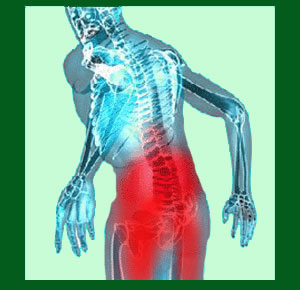
Spondylolisthesis lower back pain is one of the many possible agonizing symptoms of significant lumbar vertebral migration. The lower back is the most common location for listhesis to occur and in higher grade classifications, lumbar spondylolisthesis can become a major pain problem for any affected patient.
Lower back pain is the most common variant of dorsalgia, affecting most adults significantly at some stage of life. There are so many possible causes of lower back pain, making diagnostic evaluation a complicated and often error-filled endeavor. Many patients demonstrate incidental and innocent structural issues that are mistakenly blamed for causing pain, while the real reason for symptomology remains undiscovered and untreated. Other patients demonstrate a range of potential causes and the doctor might have a difficult time pinpointing which issues actually require treatment and which might be results of normal spinal aging.
This essay details lower back pain that is directly caused by listhesis, as well as conditions wherein listhesis is merely a partially contributory issue. Finally, we will examine the very common occurrence of unrelated lower back pain in spondylolisthesis patients.
Spondylolisthesis Lower Back Pain Causation
Both severe anterolisthesis and retrolisthesis can directly cause lower back pain due to several pathological mechanisms of action:
Vertebral migration can misalign the spinal canal, creating compression of the cauda equina en masse within the central canal space. Basically, this is spinal stenosis enacted by spondylolisthesis that can cause pain locally, as well as in far-reaching anatomical targets in the buttocks, legs and/or feet.
Spondylolisthesis can case foraminal reduction and pinched nerves. A pinched nerve in the lower back will usually affect the buttocks, legs or feet unilaterally or bilaterally, often called sciatica.
Listhesis can create mechanical pain in the lumbar spine, particularly upon mobilization of the slippage vertebral level or when performing laborious exertion, such as bending or lifting.
It should be noted that all of these conditions assume a high grade of listhesis classification of 3 or 4 in virtually all symptomatic scenarios. Grade 1 and 2 listhesis conditions are usually not symptomatic.
Spondylolisthesis Lumbar Back Pain Contribution
Spondylolisthesis can also contribute to lower back pain along with other common and uncommon factors that might work together to enact symptoms. Remember that lower back pain is often a consequence of diversified causation of structural and functional issues:
Spinal stenosis may result from a combination of lower grade listhesis with the addition of disc bulging, osteoarthritis and/or atypical spinal curvature.
Similarly, pinched nerves might result from foraminal patency reduction due to listhesis and herniated discs, degenerative disc disease, atypical spinal curvature, facet joint hypertrophy and/or osteoarthritic accumulations.
Facet joint pain can be exacerbated by vertebral migration, as can general mechanical lower back pain.
Spinal instability may result from lower grades of listhesis working together with significant lumbar scoliosis, hyperlordosis or hypolordosis.
Spondylolisthesis Lower Back Pain Coincidence
There are also times when listhesis might be completely innocent and a purely incidental clinical finding in relation to existing lower back pain symptomology. Since there are countless possible causes of lumbar dorsalgia, it should never be assumed that spondylolisthesis a primary cause or secondary contributor without evidence of pathological involvement. A good general rule states that the majority of grade 1 and 2 listhesis cases are usually innocent of creating pain by themselves, although they might have some contributory effect along with related spinal abnormalities as detailed in the section above. However, in many circumstances, correcting the primary source of pain is sufficient to mitigate pain without any treatment being required towards correcting the low grade listhesis issue.
Patients are cautioned that grade 1 and 2 listhesis is not typically the source of pain. If these conditions have been blamed as the primary or a major secondary origin of symptomatic activity, patients should always seek an objective second opinion before pursuing any type of targeted treatment.
Spondylolisthesis > Spondylolisthesis Symptoms > Spondylolisthesis Lower Back Pain



